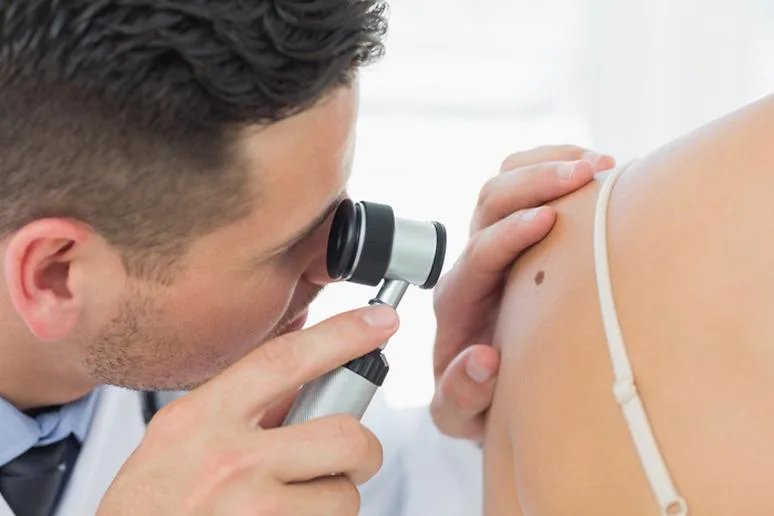Melanoma is a potentially deadly skin cancer that affects millions all over the world. Early diagnosis is critical. And while self-examination helps, sophisticated scanning by a specialist is required to confirm the risk. Thankfully, technology is evolving at such a rapid rate that you’ll soon be able to use your smartphone to identify potential skin abnormalities.
Skin cancer awareness is critical, and your smartphone is going to help
Skin cancer can impact you at any age and stage of life. Some are more at risk than others. Research shows that melanoma is a type of skin cancer that develops in your cells called melanocytes, which is essentially where you produce your melanin. Melanin is a substance in your body that provides pigmentation to your eyes, skin, and hair.
Skin cancers are the most common group of cancers diagnosed worldwide, with an estimated more than 1.5 million new cases in 2020.
Skin cancer can happen at any age and stage
Khloe Kardashian recently revealed that what she thought was a pimple on her face was a melanoma. In an episode from The Kardashians, little sister Kylie recalls how she tried to remove a bump on her sister’s face, and it just wouldn’t go away. What Khloe and Kylie didn’t realize was that the ordinary-looking bump was a melanoma.

khloekardashian/Instagram
Melanoma is just one of three types of skin cancer. The other two are basal cell carcinoma and squamous cell carcinoma. President Joe Biden was diagnosed with basal cell carcinoma after undergoing a biopsy of a lesion he had on his skin.
Thankfully, the cancerous lesion was removed successfully, and he did not need any further treatments.
What causes skin cancer?
There are many causes of skin cancer. Dermatologist Dr. Hartshorne highlights the following:
- Genetics
- Ultraviolet light
- Archwelding light
- Chronic skin disorders such as discoid lupus erythematosus
How are melanomas currently detected?
It is not always easy to detect melanomas. If you suspect you have melanoma, you need to see a dermatologist as soon as possible. Most dermatologists will use a dermatoscope, a hand-held imaging device, to examine a person’s skin, hair, or nails.
This device helps diagnose certain conditions because it can show extra detail. If there is an irregular mole, then the doctor will perform a biopsy. Your doctor will remove the suspicious-looking mole or other spots. Researchers will examine it and run further tests.
This will determine whether they contain cancer cells. Right after the biopsy results come back, physicians can perform another process called staging. This is to establish if the melanoma has spread.
The downside is having to wait for a dermatologist appointment and then having to wait for test results. All of which can be frustrating.
Signs and symptoms of skin cancer
Cleveland Clinic lists the signs and symptoms as follows:
- A fresh mole or a mole that bleeds, changes size, form, or color.
- A lump that is pearly or waxy on your face, neck, or ears.
- A flat hump or patch that is pink, crimson, or brown.
- Your skin may have spots that resemble scars.
- Sores with a depression in the middle, a crusty appearance, or frequent bleeding.
- A wound or sore that won’t go away, heals, then reappears.
- A scratchy, scaly lesion that may itch, bleed, and crust over.
Your smartphone lens will assess risk at the convenience of your home
You probably carry your smartphone everywhere you go as it makes your life easier. From telling you the time to giving you directions to taking great quality pictures, it’s no wonder the children of today never get off of them. Imagine a tool you can attach to your phone that can take detailed pictures of your mole or lesion.
A recent report confirmed that smartphone camera lens technology has been developed to use for that very reason. This is a big breakthrough for people who are concerned about skin abnormalities but are not able to get an appointment immediately with a dermatologist.
This lens will enable millions to identify their risk faster and send through images to a specialist for immediate action.
Teledermatology provides vital service
NHS officials in the United Kingdom have dubbed this breakthrough as “teledermatology”. The plan is to roll out the service across all areas of England by July 2023. The hope is that specialist doctors like dermatologists can double the number of patients they can assess in a day.
Reports indicate that the device helped to avoid about 10,000 unneeded face-to-face appointments during an earlier testing phase.
Benefits of the camera lens
- This lens provides easier access to dermatologists. No more having to rely on one dermatologist who may or may not be able to see you immediately.
- The survival rate of skin cancer will improve as people will have immediate access to assessments.
- It’s reported that the size of the lens is as big as a 50p coin (UK) which is about 27.5 millimeters in diameter, making it easier to carry around with you at all times.
- It is easily attachable to your smartphone, and it can take high-quality photos for your dermatologist
- Not only are you saving from fuel expenses, but you are also saving time you would have spent traveling back and forth from your appointment.
- The lens has also proven to reduce face-to-face interactions, helping you avoid unnecessary visits to the doctor.
- Dermatologists are able to see and treat more patients with this tool.
- The smartphone enables GPS for people living in informal settlements, and this will help patients to be seen quicker.
Is skin cancer hereditary?
Research shows that skin cancer is hereditary and can be passed on from parent to child. Indeed, during an episode of The Kardashians, mother Kris Jenner admitted that Khloe has a history of skin cancer, particularly melanoma and skin lesions.
If you have a history of cancer in your family it’s important to get screening tests as often as possible. Screening tests can assist in detecting cancer early, giving you the option of receiving the best treatment.
Bottom Line
Technology is changing health outcomes around the world for the better. In this instance, it’s clear that this new smartphone technology will make self-diagnosis of moles accessible to all communities, not just those who can afford to see a specialist. This will help specialists manage patient flow and, importantly, speed up the time from diagnosis to treatment. This will lower the risk of mortality over time.
Read more
Read this important blog post on the risk of skin cancer from an interview with an experienced dermatologist:
Dermatologist Dr. Sian Hartshorne Explains Skin Cancer Risk
References
-
Banerjee SC, Sussman A, Schofield E, Guest DD, Dailey YS, Schwartz MR, Buller DB, Hunley K, Kaphingst KA, Berwick M, Hay JL. “Let’s Talk about Skin Cancer”: Examining Association between Family Communication about Skin Cancer, Perceived Risk, and Sun Protection Behaviors. J Health Commun. 2021 Aug 3;26(8):576-585. doi: 10.1080/10810730.2021.1966686. Epub 2021 Oct 6. PMID: 34612176; PMCID: PMC8513818.
-
https://my.clevelandclinic.org/health/diseases/14391-melanoma
-
https://www.mayoclinic.org/diseases-conditions/skin-cancer/symptoms-causes/syc-20377605



![women [longevity live]](https://longevitylive.com/wp-content/uploads/2020/01/photo-of-women-walking-down-the-street-1116984-100x100.jpg)










